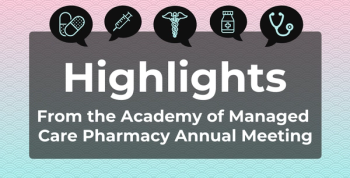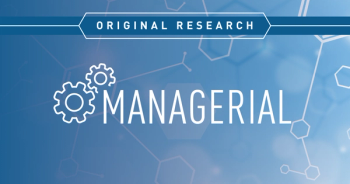
Health Equity Is a “Core” of Quality Improvement: Shawn Griffin, MD
Improving health equity is part of the core of quality improvement and requires data collection and community engagement strategies for underserved populations, said Shawn Griffin, MD, president and CEO of URAC.
The term equity might be loaded right now, but it really is just a core of quality improvement, said Shawn Griffin, MD, president and CEO of URAC. Organizations that are looking to move the needle on health equity need to be collecting data in a centralized location and putting in place a structured assessment of any initiatives.
Transcript edited lightly for clarity; captions were auto-generated.
Transcript
What advice would you give to specialty pharmacy leaders just beginning to build a health equity strategy?
We know that health equity, the term equity right now, is loaded in some circles. There's some states where you have to be careful what you say and those things. We see equity really as a core to quality. And when we talk about health equity, we talk about a quality initiative. It's quality improvement. It's really about having a standard plan to assess your population, look for the differences in what's happening among your population, think about the people who aren't getting into your pharmacy, who aren't getting your care. Is there something you could do to lessen those barriers?
We do have some requirements around language services, because…language is often one of the first barriers people run into. I think having leaders who are committed to improving quality and really caring for their communities is what we're looking for in our health equity program.
How can specialty pharmacies ensure the data they collect accurately reflects the needs and experiences of underserved populations?
For the past few years, when you talk about underserved populations, you've got the social drivers of health, or social determinants of health, and I think that we've seen a lot more opportunity for those data fields to be within the workflow for organizations.
Your first step of having good data is having a place to collect it. We want to make sure that you're not doing it on scraps of paper next to your computer, but you actually have a system and look for those things, whether they be economic, geographic, differences in race, differences in gender outcomes, and if you're not measuring those things, you're never going to find the results. Make sure that you have updated tools and that you're looking at your population in a way that's really going to capture the differences among the community that you serve.
How can organizations track progress and hold themselves accountable for advancing health equity over time?
I think the purpose in really looking at health equity is about improving care. I think that's really where this is coming from. This is not something where health equity should be off in its own little box that nobody ever looks at. Health equity should be part of your quality strategy, and what you're doing is you're having a structured assessment.
I'd say, look at URAC standards at a glance, and our standards for what are some of the best practices. Talk to other organizations about what they have done. We're going to be presenting tomorrow with CVS Health on their work on health equity. They were the first large organization to get our health equity accreditation. Look at your neighbors and see what they're doing. Look at best practices. Come to meetings like Asembia, to hear what others are doing.
Then start with your community. Ask your community about what you could be doing better, how you could be closing some of those gaps, because we really want to make sure that whatever you're doing in your community fits the community that you're serving.
Newsletter
Stay ahead of policy, cost, and value—subscribe to AJMC for expert insights at the intersection of clinical care and health economics.







































